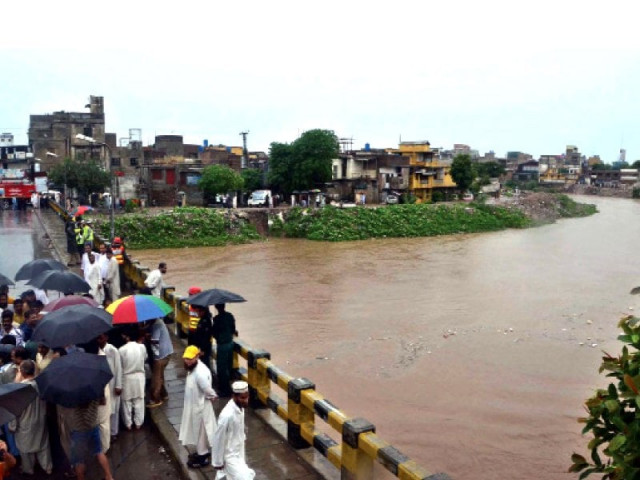Rawalpindi faces flooding challenges
Calls for long-awaited Nullah Leh Expressway project have intensified

Managing watercourses effectively is crucial for mitigating urban flooding, especially in cities like Rawalpindi which faces significant challenges due to its topography and rapid urbanisation.
Different watercourses especially Nullah Leh, flowing through the city, often plays havoc with city residents when it overflows after torrential rains during monsoon season submerging different localities and inflicting losses of millions of rupees on businesses and households.
With its total length of 16 kilometres from Kattarian Bridge to Soan River near the Lahore High Court's Rawalpindi bench building, 600 cusecs sewage is discharged into it daily. But, during heavy rains in twin cities, its water level rises to a dangerous level of 18 feet, most often overflowing to adjacent localities.
"Water and Sanitation Agency (WASA) Rawalpindi has conducted detailed assessments to identify flood-prone areas, considering factors like topography, land use and flood data," claims Managing Director (MD) WASA, Saleem Ashraf. "The capacity of existing drainage systems was improved by deepening and widening this course to handle extra water." He said officers concerned ensure routine inspections of Nullah Leh, particularly during Monsoon to prevent blockages.
"A real-time monitoring system was installed to track water levels and rainfall. The data is used to predict potential flooding and take proactive measures," he said, adding the flood response plan has also also formulated for evacuation, emergency services and recovery efforts during every monsoon season.
District administration representative Engineer Aamir Khattak claims efforts by concerned departments to reduce the risk and impact of urban flooding. He said special attention was paid to low-lying localities like Rattaamral, Katarian, Tippu Road, Dhoke Naju, Gawalmandi and Zia ul Haq Colony and heavy machinery and personnel were deployed in different areas to ensure the drainage of stagnant rainwater.
"The Punjab government had also directed district administration to take adequate measures against possible urban flooding during monsoon." But despite all these measures and claims of authorities, during the recent monsoon season, the Rawalpindi residents once again experienced massive urban flooding as they called for kicking off long-awaited, Ammar Chowk to Pindora, Nullah Lai Expressway project.
"Nullah Leh Expressway project can prove to be a game changer, ease traffic load and help control flash flooding during monsoon," said Muhammad Asif a resident of Gawalmandi area. Mushtaq Ahmed of the Committee Chowk area also urged long-term corrective measures as he mentioned damages during recent flooding.
Rawalpindi Traders Association President Shahid Ghafoor Paracha referred to havoc played by rainwater in Raja Bazaar and adjoining markets including Moti and Mochi bazaars. "Therefore, Nullah Leh should be cleared properly before the start of the monsoon. The authorities must keep in mind all this while formulating any future strategy."
Although the Rawalpindi district administration has taken some measures like straightening and widening of some reaches of Nullah Leh, stone pitching of its some portions and removal of garbage, these occasional measures prove to be insufficient.



















COMMENTS
Comments are moderated and generally will be posted if they are on-topic and not abusive.
For more information, please see our Comments FAQ